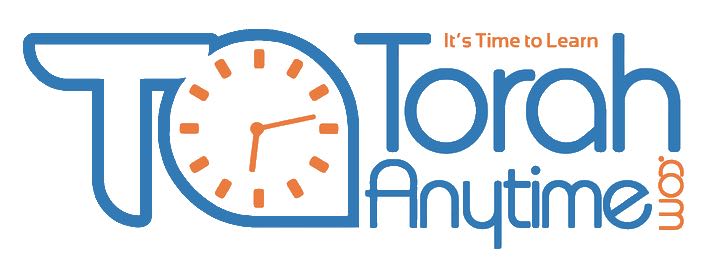Parshas VaYechi
/The fourth installment in one of the most dramatic stories in Jewish history unfolds in this weeks parsha. Bnei Yisroel, relocated to Mitzrayim, are adjusting to life outside of Eretz Yisroel. As golus goes, it seems idyllic. Yaakov Avinu, surrounded by his children the shivtei Kah lead the Jewish people to maintain themselves and continue to grow in their spiritual greatness. Uncle Yosef, the most powerful man in the kingdom, has complete control of the non-Jewish population. He decides life and death, he can bestow riches or command slavery at will. Only the king himself has more power, but Pharaoh knows the value of his newfound Israelite subjects and sees to it that they are cared for with the greatest respect. Hard to imagine a better situation.
Which brings us to a strange Rashi right at the beginning of the story. Rashi is troubled that the traditional space that is usually put between one parsha and the next is missing between parshas VaYigash and parshas VaYechi. It looks like one run on parsha. Why was the space left out? Rashi, quoting Chazal, explains that Yaakov Avinu had wanted to reveal the time of the final redemption to his children, but Hashem hid it from him.
The answer however doesn’t really solve the problem. What does leaving out a few spaces actually accomplish? How does that show us that the geulah was hidden or why the final geula was hidden from Yaakov Avinu? Why couldn’t we find out when the geulah would be? I know many people who run their finances on the assumption that the Moshiach is coming within the next week. Wouldn’t it be nice to know how much time we really have left so we can prepare properly?
The Kli Yakir gives a powerful explanation that I believe puts the whole story of golus mitzrayim, and by extension, our present day golus, into perspective. When you remove the space between Parshas VaYigash and Parshas Vayechi, it has one obvious and immediate effect – it connects the two parshiyos. Whereas we might have read Parshas VaYechi as a new story, Ezra HaSofer wanted to tell us that it is in fact directly related to the story that precedes it. The reason that Hashem denied Yaakov Avinu the ability to reveal the date of the final geulah is because of the end of Parshas VaYigash. And what is the end of Parshas VaYigash?
The last possuk reads “And Yisroel dwelt in the land of Egypt in the land of Goshen and took hold of it and multiplied greatly”. The message, says the Kli Yakir, is clear. The Jews moved in and they came to stay. Look, they figured, we’re going to be here for four hundred years. That’s a long time. Let’s make ourselves at home. This is where we are going to be, so let’s make the most of it. And they did. Soon they were becoming more Egyptian than the Egyptians. As Rashi says at the beginning of Shemos, an Egyptian couldn’t get a seat in the theatre or the ballgame because the Jews had them all. They made themselves at home all right, a little too at home. “Lagur Baaretz banu” to sojourn in the land they had come, not to make themselves at home.
When Hashem saw that they couldn’t keep themselves separate for a golus of four hundred years, and in fact they assimilated into mitzrayim to the point that only twenty per cent were even able to be rescued, what would have happened if they knew when moshiach was supposed to come? That they would have to wait over three thousand years till the final geulah? Would the Jews possibly have been able to keep themselves separate for such a vast period of time when they couldn’t even see themselves as strangers for only four hundred years? This is the frightening reality. The Jewish people couldn’t be told the time of the final redemption, because if they knew then they never would have made it.
The Torah in parshas Ki Savo tells us that when we bring our bikkurim to the Bais HaMikdash, we have to make a little speech. It contains four possukim that sum up the story of Golus Mitzrayim. In fact the second half of Maggid at the Pesach seder is dedicated to understanding these four possukim. There doesn’t just happen to be four possukim. The reason there are four possukim is to show us that there are four steps to golus and geulah. First, we move to mitzrayim, we become successful and as the baal hahaggada shows from the drash in sefer Yechezkel, we begin to assimilate. Second, the Egyptians oppress us terribly. Third, we cry out to Hashem and do Tshuva and finally the fourth step is Hashem redeems us. The second and third steps wouldn’t have been necessary if not for what happened in the first step. When we get too comfortable, we start to feel that this land is my land, that’s when we know we are in for trouble. We’re basically telling Hashem that as long as things aren’t too uncomfortable, don’t expect me to want to leave.
I was once speaking to a young lady from Slovakia. She used to be in Czechoslovakia, but the Slovaks decided they would rather go off on their own. The Czechs, figuring that they had all the industry, money and infrastructure anyway, let them go. Besides, nobody in either country wanted to have to spell Czechoslovakia if they could avoid it. So now she was living in Slovakia when she decided to come and study in Eretz Yisroel for the summer.
When I met her, she was trying to decide whether she should move to Israel or go back to Slovakia. I said to her, look, I came from America. It’s rich, it’s modern it’s comfortable – I had a hard decision to make. But you? You live in Slovakia! Not even the Czech republic, which between you and me is no great shakes either. But Slovakia? I have to convince you to leave Slovakia? But it’s my home she insisted. I asked her if there was any anti-Semitism there. Of course she assured me, lots. All the gentiles think Jews all run taverns based on old anti-Semitic stories. But she would still live in a backward, poor, anti-Semitic country because it’s home.
We have to be very careful in these times. It is all too easy now that we are living in an era where we can feel so comfortable in our temporary residences. Where the Orthodox vote is courted and we’re pandered to by politicians. Someone told me they met the newly elected Senator Schumer years ago when he was campaigning for Congress. He would introduce himself to Orthodox Jews by saying “Hi! I’m Congressman Schumer, you know, like Schumer Shabbos”. People loved it. It makes us feel so at home.
The sad reality is that if we get too comfortable in golus, and we can be in golus in the land of Israel too, I might add, then chalila, we might be putting Hashem into a situation where He might have to drive home the point to us that this land is not our land, from California to the New York island and from the redwood forests to the Gulf stream waters. Maybe we have to remember where we belong and learn to long to return to Eretz Yisroel with a bais hamikdash the way it’s supposed to be.
It’s interesting to note that there are four parshiyos, VaYashev, Miketz, VaYigash and VaYechi that tell the story of our descent into golus Mitzrayim. And sefer Shemos starts with four parshiyos, Shemos, Vaera, Bo and Beshalach that chronicles our redemption from Egyptian bondage. Maybe the four steps going down and the four steps coming up are alluding to the four possukim from Ki Savo that the Torah uses to illustrate the process of golus and geula, one that we are hopefully approaching the conclusion of for ourselves. If we want it badly enough, then we would implement the changes necessary to free ourselves from this bitter exile. The first step is knowing for ourselves where we belong and where we want to be.
Good Shabbos





